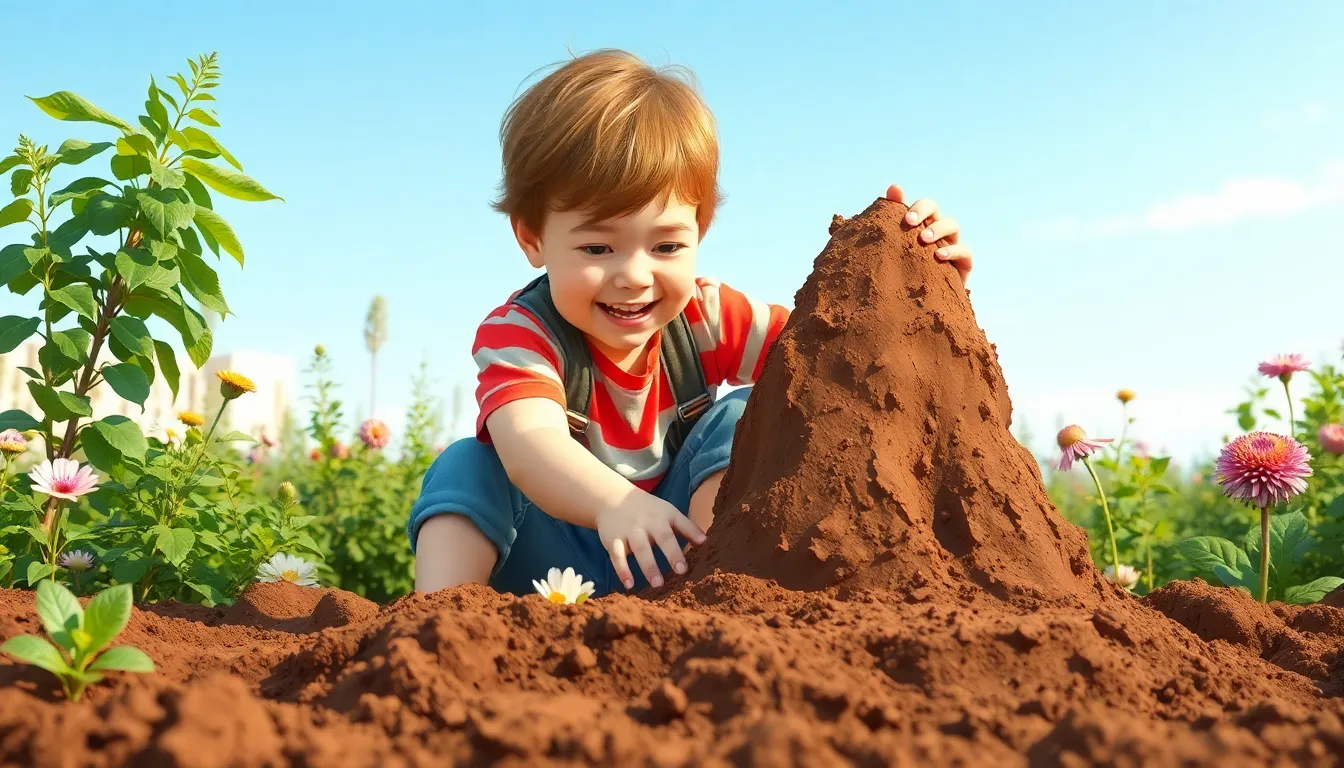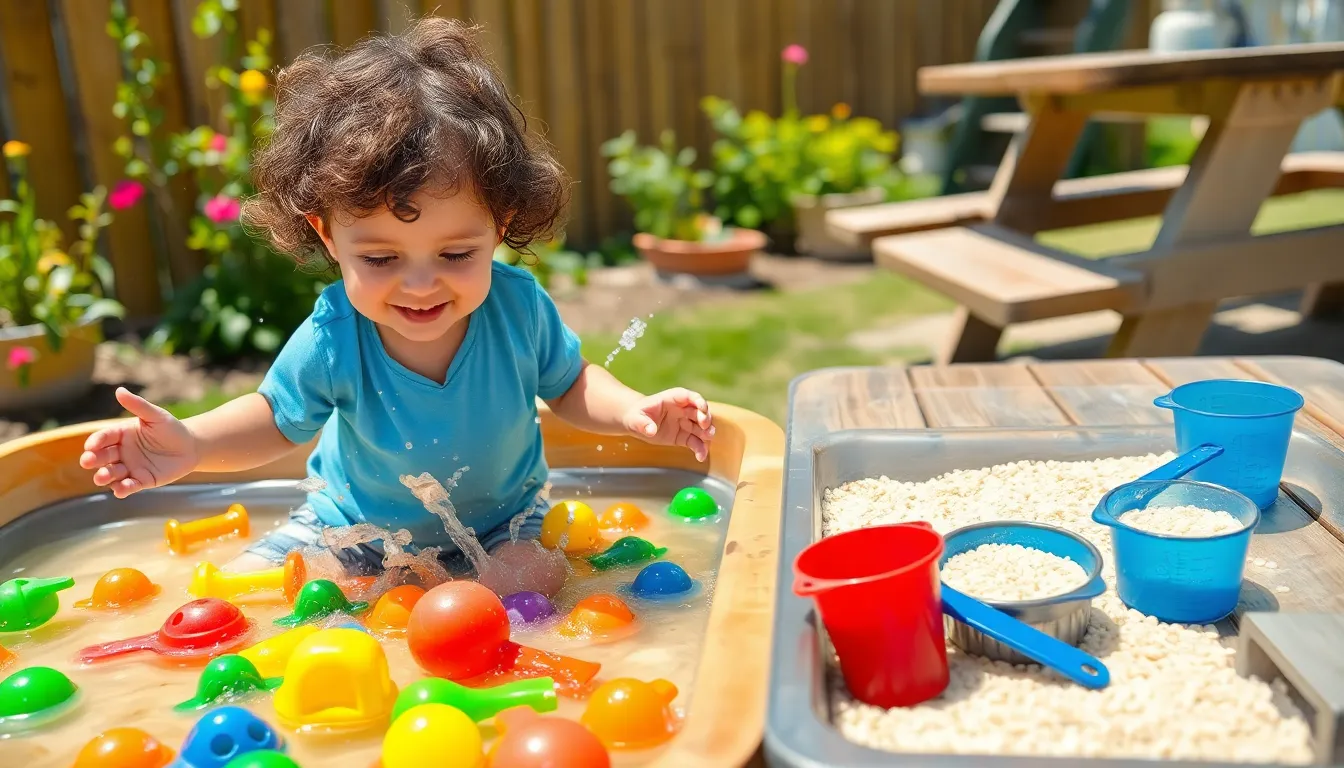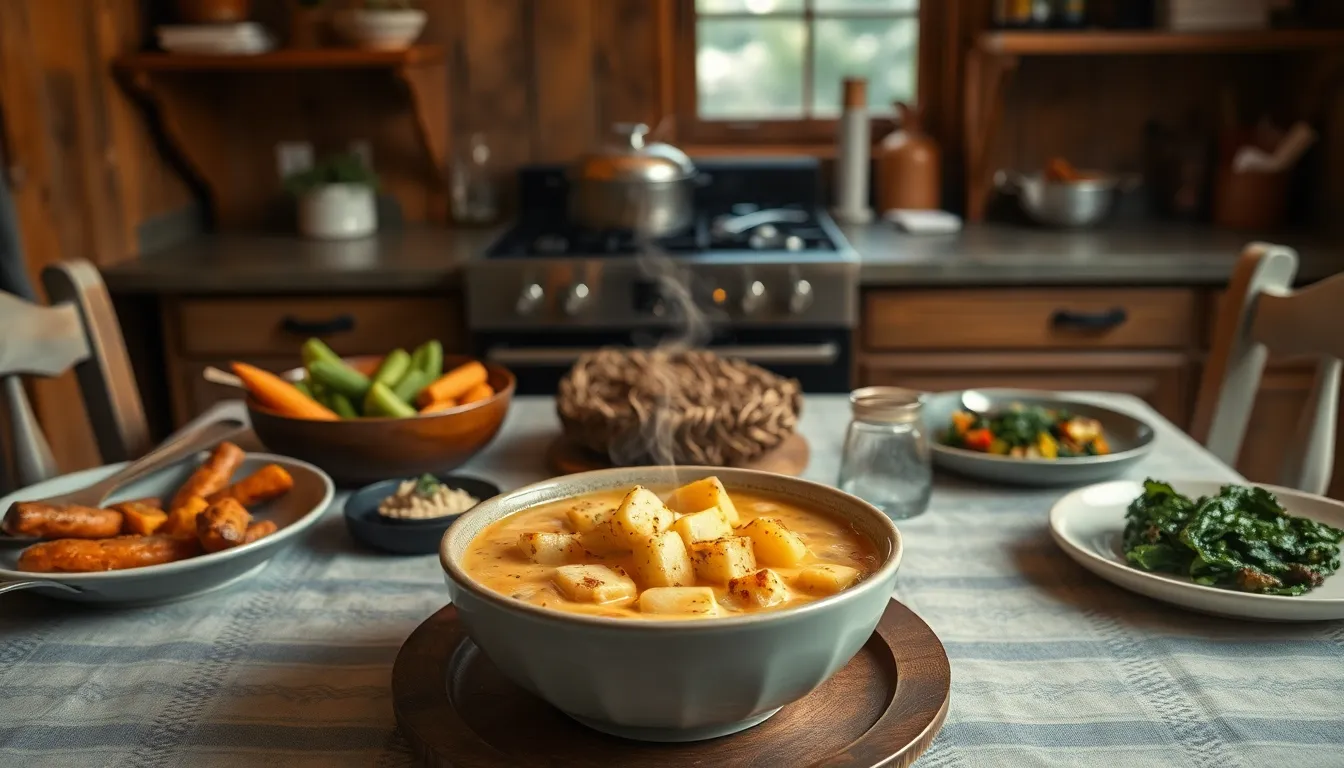Imagine a world where kids can explore, create, and learn—all while having a blast. Sensory play is that magical realm, where squishy, gooey, and sometimes messy experiences ignite curiosity and spark imagination. It’s not just playtime; it’s a secret weapon for developing fine motor skills and cognitive abilities. Who knew that a little dirt and water could turn into a mini science experiment?
Table of Contents
ToggleUnderstanding Sensory Play
Sensory play involves engaging children’s senses in various activities. This type of play encourages exploration and creativity while enhancing learning.
Benefits of Sensory Play
Sensory play supports numerous aspects of a child’s development. It boosts fine motor skills through hands-on activities like pouring or molding. Cognitive skills improve as children experiment and problem-solve with different materials. Social skills also advance during interactive play with peers, enhancing communication and cooperation. Emotional benefits arise from sensory experiences, providing a safe outlet for expression and stress relief. Engaging in this type of play cultivates curiosity and nurtures a child’s imagination.
Different Types of Sensory Activities
Numerous sensory activities exist to stimulate children’s senses. Water play involves splashing, pouring, and measuring different liquids. Aromatic play includes using herbs or spices to engage the sense of smell. Texture exploration offers a variety of materials, such as sand, rice, or foam for tactile experiences. Sound play incorporates instruments or household items to investigate sounds. Visual activities employ colorful materials like dyed pasta or glitter to captivate children’s attention. Each activity encourages children to explore and learn through hands-on experiences.
Popular Sensory Play Ideas


Sensory play presents various activities suited for both outdoor and indoor settings. These ideas encourage exploration, stimulate senses, and enhance learning engagement.
Outdoor Sensory Play Ideas
Outdoor sensory play offers rich experiences with nature. Kids can dig in the dirt and create mud sculptures, an activity that promotes tactile exploration. Water play provides another option. Filling buckets with water and adding toys engages multiple senses while promoting fine motor skills. Nature scavenger hunts can spark curiosity about different textures and smells. Collecting leaves, rocks, or flowers fosters observation and critical thinking. Gardening activities also excel in sensory engagement. Planting seeds and watering plants allows children to connect with nature and understand growth cycles.
Indoor Sensory Play Ideas
Indoor sensory play focuses on creativity and experimentation. Sensory bins filled with rice, beans, or pasta provide endless opportunities for tactile exploration. Adding scoops, cups, and toys enhances fine motor skill development. Playdough stations stimulate creativity while allowing for safe manipulation. Children can create shapes or figures, showcasing their imaginative play. Aromatic play, such as mixing spices with cotton balls or using essential oils, engages the sense of smell and promotes calming effects. Lastly, vibrating toys or musical instruments can provide auditory stimulation, fostering an appreciation for sound while enhancing sensory awareness.
DIY Sensory Play Projects
Creating sensory play projects at home fosters exploration and imagination. Simple materials often drive these activities.
Common Materials for Sensory Play
Common materials include everyday items that stimulate children’s senses. For tactile experiences, use rice, beans, or sand. Water and different textures like fabric or sponges enhance water play. Natural elements such as dirt and leaves promote outdoor exploration. For aromatic play, spices like cinnamon and vanilla create engaging scents. Additionally, everyday objects such as kitchen utensils or tools can integrate auditory aspects into sensory experiences.
Step-by-Step Guides for Projects
Start with a basic sensory bin by filling a container with rice or beans. Add safe scooping tools like measuring cups or spoons. Next, create a water play station using a shallow bin filled with water and various floating objects. Use cups, sponges, or toys to encourage interaction. For an aromatic play project, combine spices or herbs in small bowls and invite children to explore textures and scents. Finally, build a playdough station using homemade or store-bought dough, along with cookie cutters and molds to enhance creativity.
Sensory Play for Different Age Groups
Sensory play varies across age groups, catering to children’s developmental needs. Each age category benefits from activities designed specifically for their skills and interests.
Sensory Play Ideas for Toddlers
Toddlers thrive on exploration through texture. Simple activities include filling a bin with cooked pasta or playdough for squishing. Messy play with finger paints promotes creativity. Water play with cups and spoons encourages pouring, enhancing fine motor skills. Additionally, sandbox play allows toddlers to dig and sift through sand, which fosters tactile experiences. Aromatic play using spices lets them discover new scents, promoting sensory engagement.
Sensory Play Ideas for Preschoolers
Preschoolers enjoy imaginative and interactive sensory play. Creating a sensory garden with soil, plants, and small bugs supports outdoor exploration. Sensory bins filled with colored rice or dried beans encourage scooping and pouring. Incorporating themed bins, like ocean or space, enhances creativity through storytelling. Engaging in sound exploration with drums or shakers helps develop auditory skills. Art activities using texture paint or collage materials also stimulate their artistic expression.
Sensory Play Ideas for School-Aged Children
School-aged children increasingly seek complex sensory experiences. DIY science experiments, such as making slime or volcanoes, promote exploration and problem-solving. Craft projects with mixed media, including fabric and paper, enhance creativity while refining motor skills. Outdoor scavenger hunts tap into curiosity, allowing children to discover natural textures and scents. Kinesthetic activities like obstacle courses engage movement, supporting physical development. Collaborative projects, such as group art installations, encourage teamwork and social interaction.




